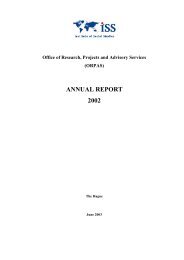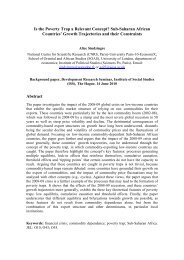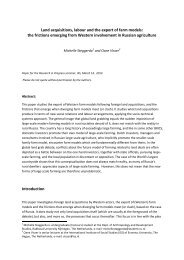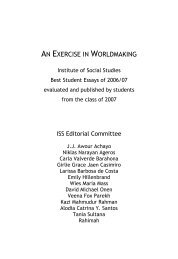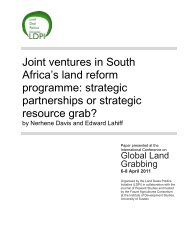AN EXERCISE IN WORLDMAKING 2009 - ISS
AN EXERCISE IN WORLDMAKING 2009 - ISS
AN EXERCISE IN WORLDMAKING 2009 - ISS
You also want an ePaper? Increase the reach of your titles
YUMPU automatically turns print PDFs into web optimized ePapers that Google loves.
156 TERESA LORENA JOPSON<br />
Women in the Army<br />
The military as an institution has been historically associated with men.<br />
Soldiers are usually gendered, and to refer to the women in the group, we<br />
often have to put qualifiers for the term, such as women soldiers. Often<br />
occluded, the women are visible in this collection and depicted in active<br />
roles such as fighters. However, much is left unsaid about the struggle of<br />
women within the Army. The New People’s Army has dominantly male<br />
fighters, yet it has not been overlooked in this book that women have<br />
been fighting alongside them. In fact, I would argue, the women guerrillas<br />
are imaged amply in Pulang Mandirigma. I suggest that this is for<br />
good reasons.<br />
First, the CPP and NPA are reinforcing its stance as a progressive and<br />
revolutionary platform towards empowerment of the masses, and the<br />
realization of people’s rights. In images 1-3, we can observe that women<br />
are able fighters, capable of leadership, competent in combat, and trainable<br />
to acquire special skills (such as snipe shooting) within the army.<br />
This negates the stereotype of women being passive and weak.<br />
Secondly, following the logic that able members make able organizations,<br />
we can say that these capabilities of women can be extended to the<br />
capabilities of the army.<br />
Thirdly, imaging women fighters negates the stereotype of the army<br />
as a group of violent armed men. While this reinforces women’s capability<br />
for fighting, it also banks on the stereotype of women being peaceloving<br />
that “softens” the image of a violent army. This might be relevant<br />
in light of the imaging of terrorist groups being male and cruel. The CPP<br />
and NPA sets itself apart from these groups by showing that the war it is<br />
fighting is every Filipino’s cause.<br />
The images of women in ‘Fighting Army’ then helps build the identity<br />
of the CPP and NPA as progressive, strong and just, and an army apart<br />
from terrorist groups.<br />
As counterpoint, I explored if the emphasis on women fighters constitutes<br />
a textual violence as suggested by Meijer (1993). There is danger<br />
in imaging guerrilla women as exotic fighters and romanticized rebels.<br />
Another trap is a kind of representation as objects intended to lure male<br />
soldiers to the army. Studying the focalization in the three photographs<br />
in ‘Fighting Army’ that image women, I am confident that the CPP was<br />
careful in portraying women.




